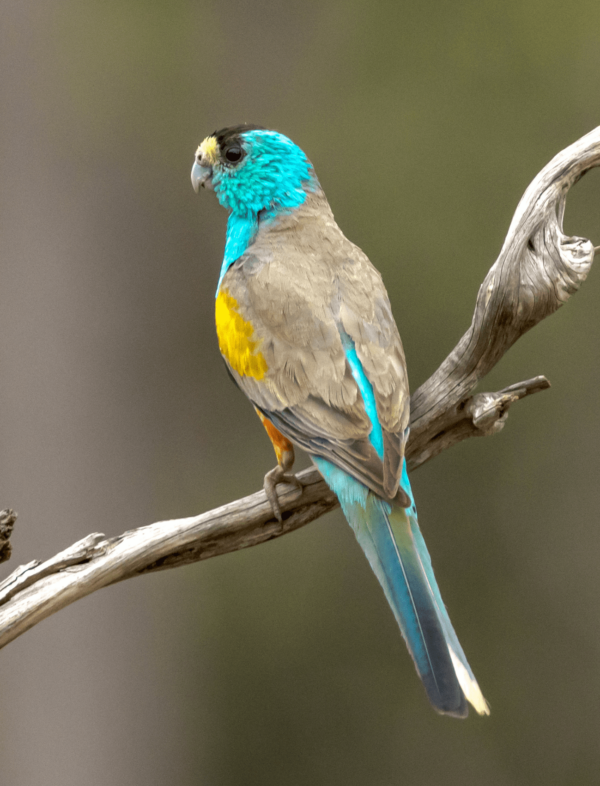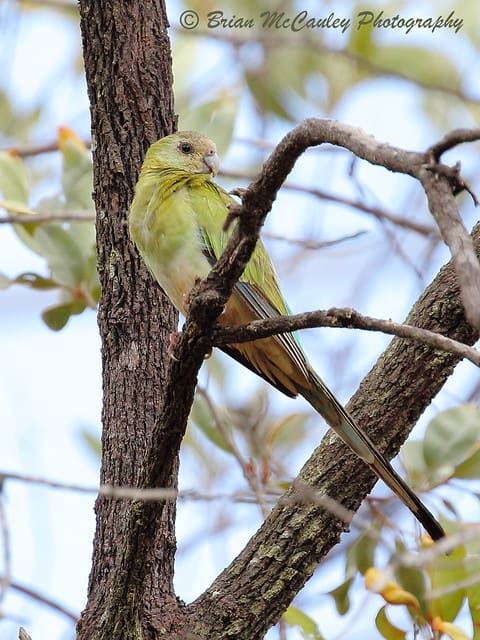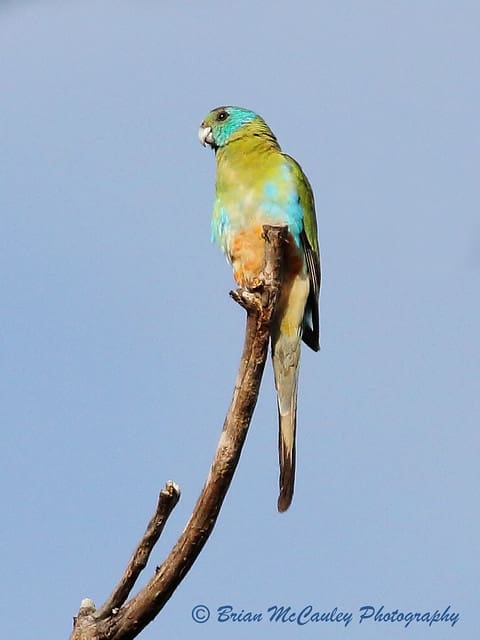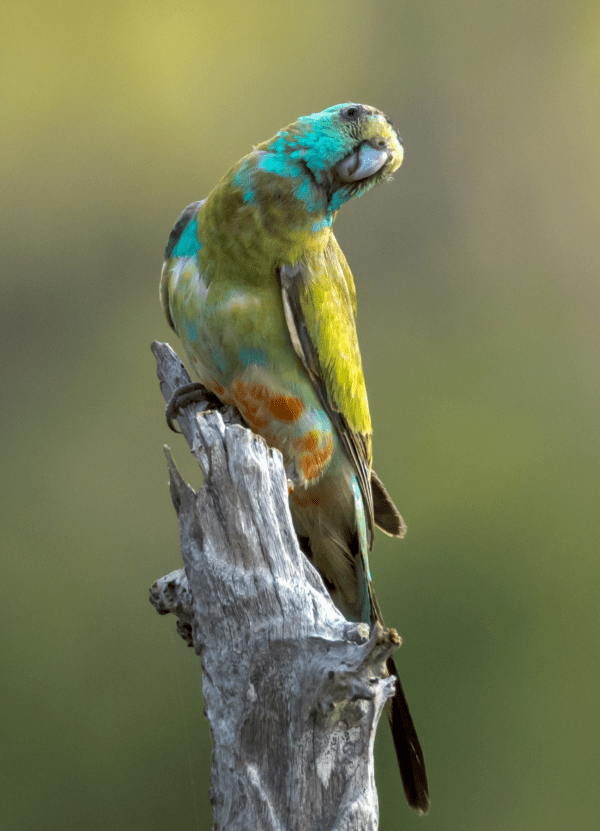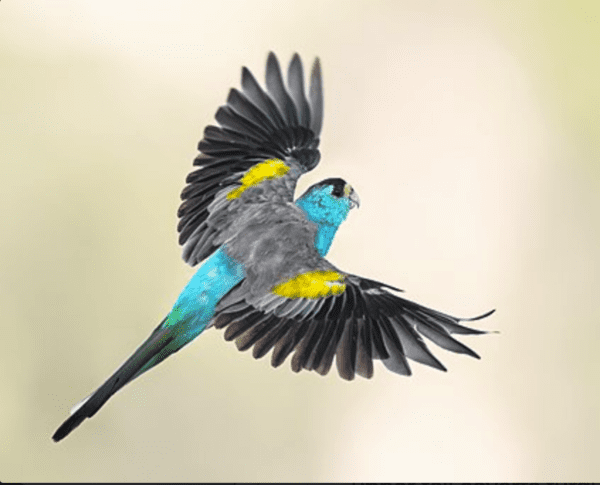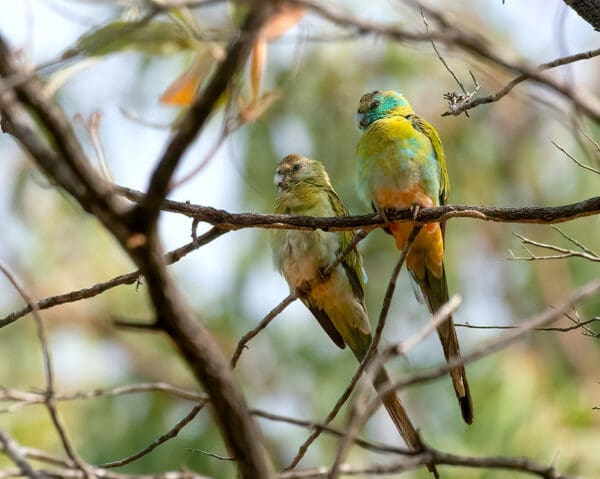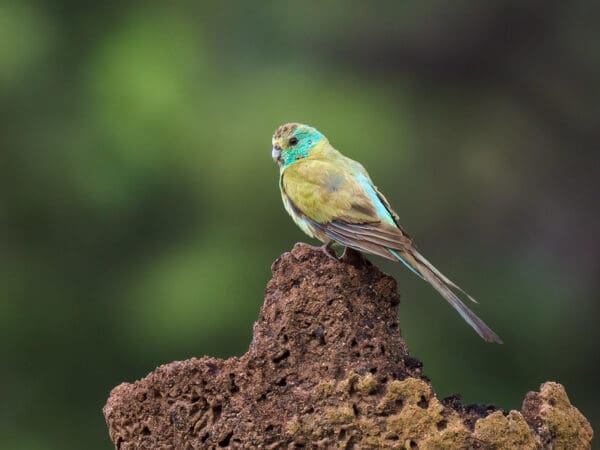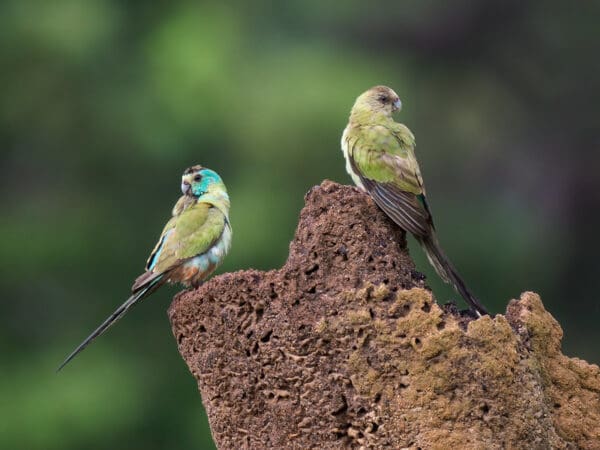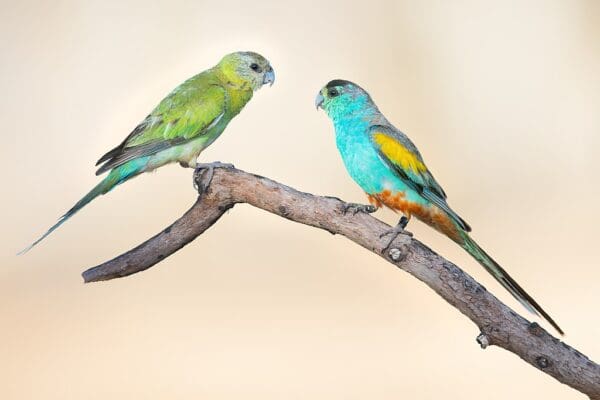Golden-shouldered Parrot
Also known as:
Golden-winged Parrot or Parakeet, Chestnut-crowned Parrot or Parakeet, Antbed Parrot, Anthill Parrot, Alwal
Also known as:
Golden-winged Parrot or Parakeet, Chestnut-crowned Parrot or Parakeet, Antbed Parrot, Anthill Parrot, Alwal
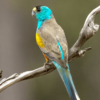
![© Brian McCauley [CC BY-SA 2.0] via Flickr A wild female Golden-shouldered Parrot perches in a tree](https://parrots.org/wp-content/uploads/2023/01/wpt_Golden-shouldered-Parrot_1148-6-100x100.jpg)
![© Brian McCauley [CC BY-SA 2.0] via Flickr A wild male juvenile Golden-shouldered Parrot perches on a branch](https://parrots.org/wp-content/uploads/2023/01/wpt_Golden-shouldered-Parrot_1148-5-100x100.jpg)
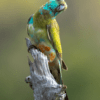
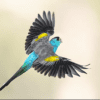
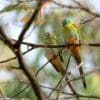
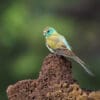
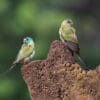
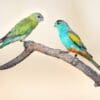
DID YOU KNOW?
The nest hollow of the Golden-shouldered Parakeet is excavated in a termite mound still damp from the wet season.

Psephotellus

chrysopterygius
Size:
26 cm (10.1 in)
Weight:
56 g (2 oz)
Subspecies including nominate:
one
Colour Adult:
Male-yellow frontal band; black crown merging into brown/black hindneck; turquoise face and underparts; abdomen to undertail coverts orange/red tipped with white; brown back and underparts; rump and upper tail coverts turquoise, middle wing coverts yellow; tail brown/green tipped blue/white. Beak grey/white. Eye brown. Female-dull green; forehead pale yellow; crown and hindneck brown/green; rump and upper tail coverts pale turquoise; white abdomen to undertail coverts, feathers on centre of abdomen margined light red; yellow/white underwing mark.
Colour Juvenile:
As in female but male youngsters brighter turquoise cheeks and underwing mark present.
Call:
Two note contact call, not as high-pitched as close relative Hooded Parrot. Whistle also described.
More Information:
Content Sources:
CITES
BirdLife International
Cornell Lab of Ornithology/Birds of the World
Parrots: A Guide to Parrots of the World, Juniper and Parr, 1998
Parrots: Status Survey and Conservation Plan 2000-2004, Snyder, McGowan, Gilardi and Grajal, 2000.
Parrots of the World, Forshaw and Cooper, 1977. 2010 edition
Vanished and Vanishing Parrots, Forshaw, 2017.
Parrots of the World, Forshaw, 2006.
Parrots in Aviculture, Low, 1992.
Parrots: Their Care and Breeding, Low, 1992.
Captive Status:
Fairly common in Australia; rare elsewhere.
Longevity:
—
Housing:
Walk-in enclosure, minimum length 3 m (9.8 ft).
Diet:
Mixture of small seeds: canary, millet plus smaller amounts of oats, buckwheat and safflower; limited sunflower; spray millet; green leaves, green peas, fresh corn, insectivorous foods; seeding grasses; rearing food (hard-boiled egg, wholegrain bread and carrot, all ground to crumbly consistency); apple and other fruits if taken.
Enrichment:
—
Nest Box Size:
6″ (15 cm) square, 10″ (25.4 cm) high, heated to 70 F (21 C).
Clutch Size:
4 to 7
Fledging Age:
5 weeks
Hatch Weight:
—
Peak Weight:
—
Weaning Weight:
—
World Population:
About 629–933 occur in the Morehead River area and 148–168 at Staaten River. Declining.
IUCN Red List Status:
Endangered
CITES Listing:
Appendix I
Threat Summary:
A BirdLife “restricted-range” species. Significant decline and contraction of range since the start of the 20th century. Altered fire regimes have resulted in more woody plants that favour predators like the Pied Butcherbird (Cracticus nigrogularis). Local capture of nestlings for trade occurred from the 1950s to the 1970s. Ongoing loss of food sources to cattle grazing and dry-season burning of grasslands. Suffers predation by feral cats and disturbance by tourists.
Range:
NE Australia, with two isolated breeding populations existing on Cape York Peninsula, N Queensland.
Habitat:
Found in wet or dry grasslands and open woodland, where there are termite mounds, and areas with Eucalypt and Melaleuca trees. Post-breeding birds may venture into mangroves.
Wild Diet:
Mainly eats seeds of annual grasses, especially firegrass Schyzachyrium and Alloteropsis semialata. Also consumes Desmodium and introduced verano Stylosanthes hamata legumes. Also takes herbs, sedges Scleria and other grasses Panichloa nervilemma.
Ecology and Behaviour:
Usually found singly, in pairs or family parties, gathering to feed in flocks of up to 30. Roost in foliage in hottest part of day. Pairs form lifetime bonds.
Clutch and Egg Size:
4 to 7 rounded eggs, 21.5 x 18.5 mm (0.8 x 0.7 in).
Breeding Season:
April-August. Nest is in one of two types of terrestrial termitaria: meridian mounds of Amitermes laurensis and conical mounds of A. scopulus.
